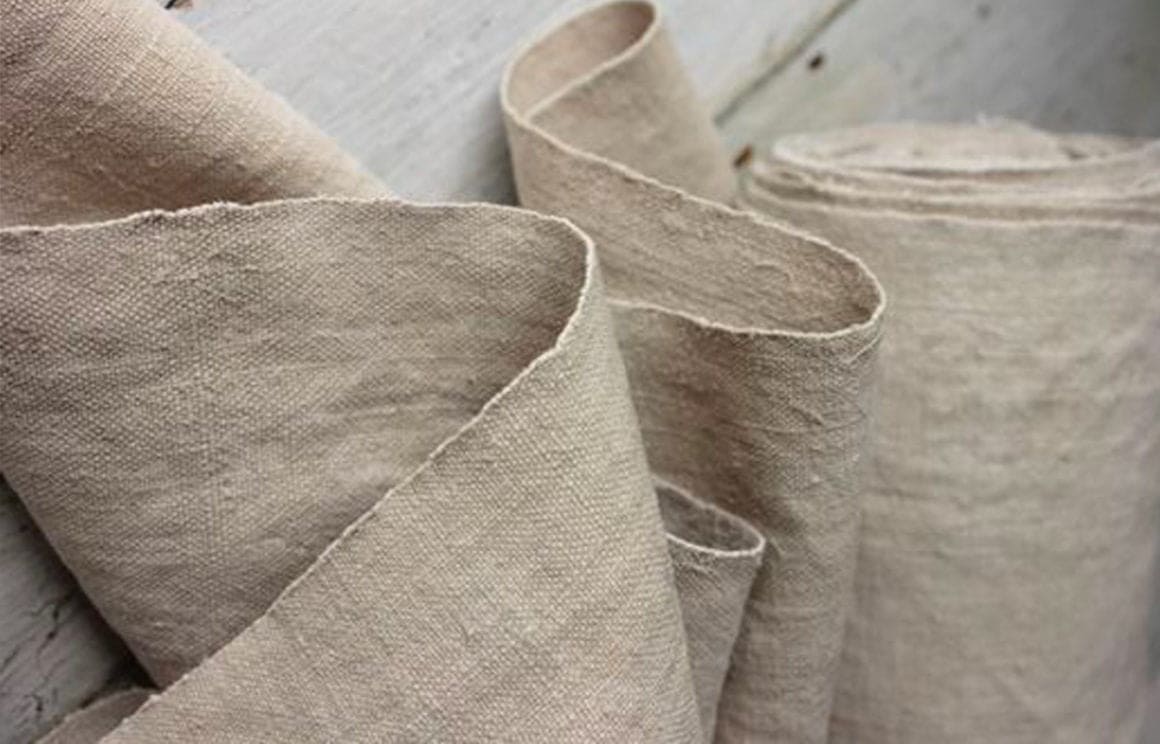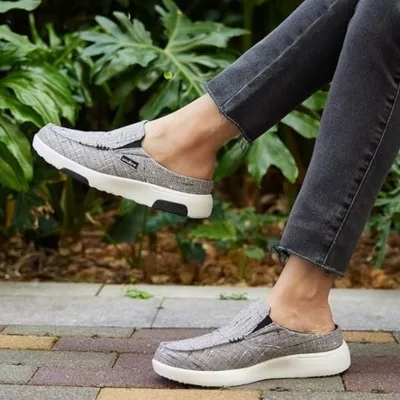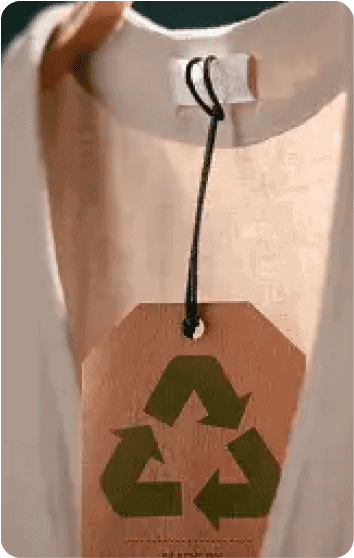Scrolling through myriads of websites on sustainable fashion and conscious consumerism, renting clothing stood out as a popular eco-friendly option. I was fully convinced this was one foolproof way to save the planet. That is until I did my research. Turns out that renting clothing is not devoid of its flaws and has been marketed as a sustainable option by big corporates in order to manipulate customers. I am sure there are those owning rental businesses with completely earnest intentions.
So, this deep dive into rental clothing is for all conscious consumers and well-intentioned sellers. Find out exactly how it works, what it does to the environment, how sustainable it really is, if it’s actually worth it, and of course look into some alternatives to renting clothing.

How Does Renting Clothes Work?
Rental services in general allow you to rent items for a brief period of time. This could be anything from wedding gowns to DVDs to gadgets to cars and more. One can rent clothes through online services and even in physical stores. Rental services for clothes usually stock up on multiple brands and organize their catalogs in such a way as to make it easy for consumers to find what they want. They divide their items into different categories and everything from extravagant wedding gowns to basic everyday jeans can be found on these platforms.
All the rental services available are vastly different providing you with a number of options. The stipulated amount of time for which you can keep these clothes is different and all you have to do is return them in a bag usually provided by the company themselves.
A lot of platforms for renting clothes even offer consumers memberships and subscriptions providing them with enticing offers and ease of renting.

Membership provided by Rent The Runway
In essence, instead of having to buy new products, you rent items that have been used and will be used by other consumers. This stops us from disposing of clothes we only really wear on a few occasions. A good example would be a wedding dress. Wedding dresses are only really worn once by us and then disposed of or left to collect dust in our attics. The damage done to the environment is immense when a new wedding gown is produced.
It would be much more sustainable if multiple brides find use in one wedding gown for their special day. This would also prove to be way more cost-effective as renting a dress is cheaper than actually buying it!
All in all renting clothes seem to be a very attractive cost-effective and sustainable alternative. They prevent overproduction, promote conscious choices, increase the lifecycle of a product, reduce dumping, and provide those who can’t afford to buy expensive items an avenue to wear fancy clothes. However, this is all surface-level. When you really look into it, you will be pleasantly surprised.
Is Renting Clothes Better For The Environment?
The apparel market worldwide is worth 1 trillion euros. Fast fashion is the biggest contributor to such humongous sales as millions of new clothes are pumped into the market and quickly discarded. The fashion industry faces heavy criticism for being highly unsustainable and unethical. Around 100 billion clothes are produced every year and out of these 50% are disposed of just within one year. 80% of this is incinerated while 20% ends up in landfills.
The global textile industry emissions have been evaluated to be around 1.2 billion tonnes of CO2 per year which is almost as much as the emissions from the automobile industry. It is very VERY evident that a solution to this problem is important. One such solution businesses have come up with is renting clothing.
According to research, one in 6 people do not want to repeat an outfit after posting it once on social media. Fast fashion companies monopolize this in order to capitalize on fleeting fashion trends and make consumers want to buy more and more to stay relevant on social media. Even then, there is growing awareness amongst buyers as they seek answers on how ethical and sustainable the brands they shop from really are.
Renting clothing presents itself as a solution to this need of consumers to want to not repeat outfits while also being ethical. You can simply rent an outfit and then return it and rent a new one without needing to buy it every time. This will help in reducing production. In this sense, renting clothing certainly looks very sustainable and eco-friendly.
Renting clothing helps in retaining items in the circular economy and increasing the lifespan of garments. Instead of ending up in landfills or being incinerated, clothes now will find a new home every week. The clothing rental business is fast growing in relevance. Rent The Runway, a company based in the USA can be considered the pioneer of this model. Their success is immense and their company has been valued at 770 million euros.
The concept of renting clothing is not really new. We are all familiar with it to some extent. We rent for weddings and costume parties. However, the idea of renting everyday wear is certainly something we really haven’t delved into.
This rise in renting clothing can also be beneficial to the environment from the supply side of things. Instead of throwing away unsold inventory, big corporates can provide their stocks to rental companies and also free up space in their warehouses. Companies like Urban Outfitters have started providing rental services in the USA. H&M has also experimented with this idea in Stockholm. However, this may also come off as a greenwashing tactic by fast fashion companies. We will delve deeper into this aspect in the coming section.
Overall renting clothing has been marketed as a far more sustainable option in this growing age of social media and the need for newness and staying on-trend. It claims to provide consumers with the avenue to experiment and have fun and try new things without them producing additional waste. However, there is still growing skepticism about this industry.
At the end of the day, it is not addressing the root cause of overconsumption which is consumerism. Instead, it seems to profit off of it by playing to the consumers’ needs to stay relevant by wanting new outfits on social media every time they post. It seems more like a temporary solution. In fact, digging deeper we realize that this in itself is a problem.
There are also growing concerns about the sustainability of this model when it comes to transport, cleaning, and packaging. We need to decide whether the pros outway the cons or not.
Is Renting Clothes Sustainable?
Big corporates have one motive and that’s profit because of this they constantly try to convince their conscious consumers that they are sustainable. They want their products to sell and even rental companies are guilty of this. Clothing rental companies have been assuring customers that their methods are helping the planet. However, very little research was done regarding this.
It was only in 2021 that data became available on this topic when a study was published in Environmental Research Letters. It suggested that buying a new pair of jeans and wearing it normally and then disposing of it would be better than renting a pair and returning after ten uses and they had the necessary data to corroborate it. They concluded this by calculating the carbon emissions generated throughout the process of production, delivery, utilization, and end-of-life stage in the case of both scenarios. They suggested that renting a pair of jeans would have a higher global warming potential.
While it can be argued that renting would increase the utility of a garment, the emissions generated in the process of transportation are hard to ignore. Even then, the study also states that if consumers increased the number of times they wore the jeans after renting them and found a low-carbon mode for getting and returning the product, then it would be equal to and maybe even more sustainable than buying a new pair of jeans.
Another factor is the type of clothing being rented or bought. The carbon footprint of utilizing a poor-quality fast fashion garment would be more than that of a high-quality piece of clothing. It will last longer. There is also the case of distance. Renting from a store within walking distance is way more sustainable than buying online as that would involve transportation.
There is a lack of transparency from online rental services when it comes to their business practices, transportation chains, and how exactly they aim to promote sustainability. They do not provide proper evidence to prove that their businesses are indeed eco-friendly. This lack of evidence makes it difficult for consumers to truly decide whether renting is a genuinely sustainable option as compared to buying.
Dry cleaning the garments after each use and the entire cleaning process is also harmful to the environment. A lot of these rental companies also use harmful plastic packaging which just adds to the problem. If anything, constantly renting out a garment would lead to more harmful packaging material being used than when it is bought new.

Finally, the main issue here is most definitely that cloth rental companies take advantage of the concept of fleeting trends. They stock up on clothes that are in fashion and as soon as they go out of fashion, they stock up again on clothes that are currently trending. They essentially behave like fast fashion companies. So, regardless of how you try to keep up with trends, be it fast fashion or renting, it is still bad for the planet. At the end of the day, it is only when we don’t buy repeatedly and wear are clothing as long as we can that are we being sustainable.
Overall, Is Renting Clothes Worth It?
In response to this study, Rent The Runway released its own research to prove that renting is more sustainable than buying new clothes. Rent The Runway worked with Green Story and Sgt who were third-party consultants and found that their rental clothing model had displaced the production of 1.3 million new garments back in 2010 which led to 67 million gallons of water being saved as well as 98.6 million kWh energy and 44.2 million pounds of C02 emissions in the past decade.
Also, on average, instead of buying a new garment, if a piece of clothing is rented then there is a 24% reduction in water usage, a 6% reduction in energy use, and a 3% reduction in C02 emissions. These figures do not take into account the environmental benefits of clothes not being produced as a result of renting. If they did, then the figures would be higher. If a dress is rented 50 times instead of bought new by 50 different people, the environmental savings would be extremely high.
Here’s the problem though. Rent The Runway didn’t really provide sufficiently reliable data while conducting this research. So, we really can’t take these figures at face value. Even then, prior Swedish research has its limitations.
Firstly, in their research, they did not take into account water use, pollution caused by toxic chemicals, waste generation, etc, and only focused on carbon emissions. If the others were also taken into account, renting clothing would probably have been seen as more sustainable than buying.
Secondly, the study was based on cotton jeans. Synthetic clothing on the other hand is way more resource-intensive and would have also given different results. There is also the fact that the researchers assumed the jeans would be worn hundreds of times before being thrown. One cannot assume that all consumers behave this way. Consumers who indulge in clothing hauls most definitely do not wear bought clothes this often before disposing of them.
What we can extrapolate from this is that the debate around the sustainability of renting clothes is inconclusive. However, it is a fact that it can to some extent be a solution to fast fashion but its logistics prove to be detrimental to the environment.
I believe that renting even then can be good in some instances but it can also encourage more consumption. What with rental companies offering subscriptions, a consumer will essentially be getting new clothing every month. This feeds on the desire to wear new outfits and the craving for new things. It thrives on consumerism. Also, by renting multiple clothes too frequently, a consumer will definitely end up spending way more money than necessary for clothing. I mean a conscious consumer who buys just 2 pairs of jeans and 4 tees for a year is most definitely more cost-effective than a consumer renting new clothes every week.
The advice I can give is to not dismiss renting clothing completely and instead use this resource effectively as described below.
What To Do Instead?
Renting clothing is effective when practiced consciously. Rental services need to ensure that their practices are as sustainable as possible. They need to focus on introducing options such as pickups and reducing carbon emissions produced by transportation. They need to find a solution to the plastic used in packaging. Some rental companies already give consumers the option to ship the packing material back to them so that it’s not thrown. However, we can’t be sure that all consumers adhere to this. Instead, eco-friendly packaging must be used.
Companies should also not promote consumerism in order to sell their business. Rental companies doing this is nothing short of a greenwashing tactic. Instead, they need to actively promote less consumption. I personally think renting out trendy pieces of clothing isn’t the best idea and is only adding to the problem.
What consumers need to do is rent consciously. First, they need to ensure that the rental company they are renting from is ethical. Secondly, we should opt for rental stores which are a walking distance from where we live and pick up clothes ourselves. The environmental cost of renting online and relying on transportation from a long distance is too high to ignore.
Finally, I definitely think we should opt to rent those clothes which we only wear on special occasions. Things such as wedding gowns, graduation suits, party dresses, and fancy costumes are often items that collect dust after one or a few uses in our cupboard. It makes logical sense to rent these. Items of day-to-day wear, however, like jeans, tees, crop tops, hats, and shirts, now these we should definitely buy.
Actively stop yourself from overconsuming and only buy the necessary amount of day-to-day wear. I say this because renting clothes would allow you to wear them for at most a month. After that, you will have to rent the same thing again. It is definitely more feasible and cost-effective to instead invest in a good pair of jeans and wear it for years.
When rental companies offer everyday clothing, they expect you to rent new items every week as the trends change. They promote the existence of trends. To be ethical and sustainable, we need to stop giving in to fleeting trends. So, yes, rent only when you know for a fact it’s an item you would probably not wear more than 10 times.
Conclusion
At the end of the day, the only solution to unsustainability in the fashion industry is to consume as less as possible and consume ethically. Renting clothing unfortunately also promotes fast fashion, albeit unknowingly. It is up to us to make informed decisions, make the right choices and remain fashionable without compromising the planet
Explore Ecowsier for more insights and inspiration on sustainable fashion and ethical brands. Discover articles that guide you toward building a stylish, eco-conscious wardrobe.















